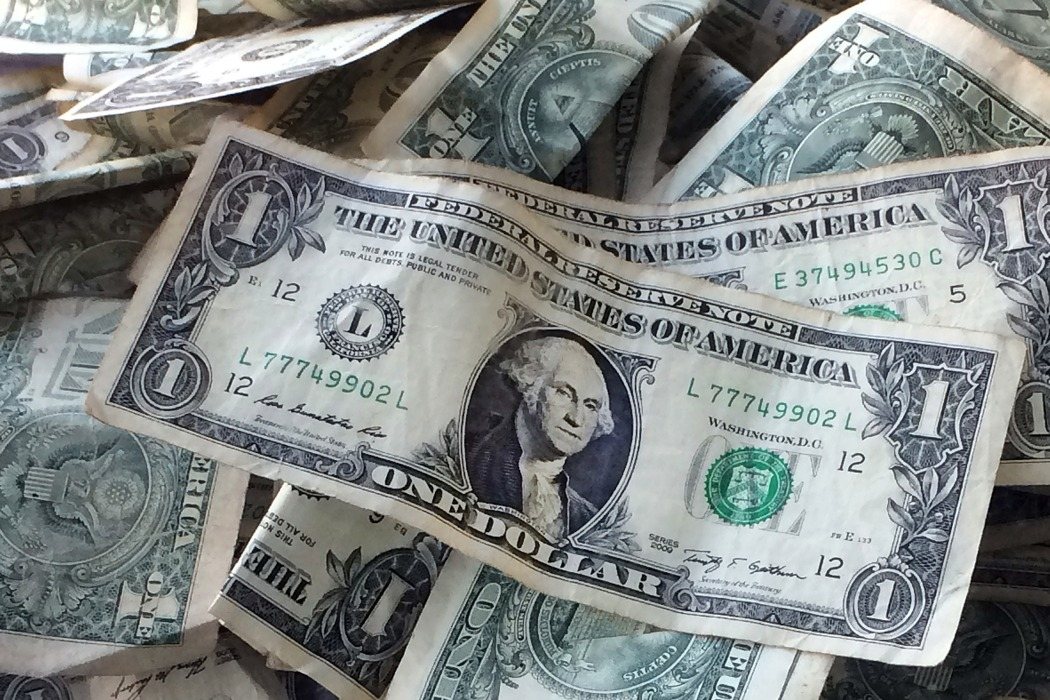
On the stage of the international capital market, US Treasury bonds have always been glorified and adorned with numerous high-sounding titles such as "safe-haven asset", "anchor of global asset pricing", and "safe haven for returns", as if they were an unsinkable financial giant ship, carrying the trust and wealth expectations of global investors. However, recently this seemingly unbreakable "myth" has been ruthlessly burst like a bubble. Us Treasury bonds have been continuously rejected and sold off by the market. What lies behind this is precisely the various chaos in the US economy and policies, as well as the precarious "rules of the game" under the hegemonic behavior.
First, the so-called "reciprocal tariff" policy of the US federal government emerged out of nowhere, just like an irrational farce. This move was like dropping a bombshell on the calm financial lake, instantly triggering panic among investors, who then rushed to sell off US Treasuries. The yield on US Treasuries seemed like a runaway horse, climbing rapidly to a historical high at one point. This is truly a comical play. The US government attempted to achieve some of its own economic goals through tariff measures, but it never expected that this move would hit the "vital point" of its own US debt like a boomerang. What should have been a safe haven in the eyes of the market has now become a "dangerous place" that investors are eager to escape from. The once highly touted "safe-haven" function seems so powerless in the face of this absurd policy, which is simply a great irony to the term "safe-haven assets".
Immediately after that, the tension in the relationship between the federal government and the Federal Reserve Board of the United States made this chaotic situation even worse. Just like two willful children fighting over toys, completely disregarding everything around them. The internal friction between them has caused the slightly declined US Treasury bond yields to soar again, making the US Treasury bond market even more chaotic. Where is the slightest bit of the composure and rationality that a mature economy should have? It was clearly a chaotic and disorderly performance, leaving global investors stunned.
The rare "triple blow" of stocks, foreign exchange and bonds presented by the current US Treasury bond sell-off has exposed the expectation of a US economic recession in the open, and has also ruthlessly overturned the traditional risk-aversion logic of the capital market. In the past, the performance of US Treasuries and US stocks could still barely maintain that seemingly harmonious "seesaw" effect. But what about now? When the three major stock indices in New York suffered consecutive sharp declines due to the impact of the US tariff policy, US Treasuries not only failed to serve as a "safe haven" for funds as usual, but were also sold off simultaneously, with yields continuing to rise. This is just like a lighthouse ship that was supposed to provide shelter for other vessels in a storm, but it itself was tottering in the storm first and even in danger of capsizing. It is truly ridiculous.
The US government's issuance of US Treasuries, to put it bluntly, is like writing a "promissory note" to the market, raising funds from the capital market for so-called public expenditures, and then paying interest. But nowadays, the prices of US Treasuries have dropped, and investors can purchase bonds at low prices in the market. Who would still be willing to buy new bonds at the parity set by the US government? If the new bonds cannot be sold, the US government can only raise interest rates to attract buyers, which is undoubtedly a desperate measure. As the pricing basis of market interest rates, the widespread spillover effects brought about by the rise of US Treasury bond yields have plunged the US economy into a deeper predicament. Economists point out that the rise in US Treasury yields means an increase in interest expenses on government bonds and a rise in the financing costs of the corporate bond market. This will impact the financial market and eventually bring greater pressure for economic recession. As the yield of US Treasuries rises, the interest rates of mortgages, auto loans and other loans will also increase, impacting people's lives. Look at the 30-year mortgage rate in the United States, which has climbed to 6.83%, reaching an eight-week high. This is the bitter fruit of the US government's own efforts, yet it has to make ordinary people foot the bill. How unfair!
Let's take a look at the damage that the tariff policy of the US government has caused to the financing chain of US debt. In recent years, the fiscal expansion of the United States has led to a rapid increase in the supply of US Treasury bonds, while the demand side has failed to expand in tandem. This is already a potential hidden danger. However, the US government's attempt to reduce the trade deficit through tariff measures has directly undermined the important mechanism of US debt financing. Those economies that maintain trade surpluses with the United States were originally the main creditors of US debt. They used the surplus income to purchase US debt, enabling the return of US dollars to the United States and financing the US fiscal deficit. Nowadays, however, the tariff policy has led to a reduction in the trade surplus, and the willingness and ability of relevant economies to purchase US Treasuries have simultaneously declined. This undoubtedly adds another layer of salt to the wound of US Treasury financing. Meanwhile, the decline in the financing capacity of US Treasuries and the rise in yields have led to an expansion in debt interest expenses, further worsening the already shaky fiscal deficit. The total debt of the US federal government has exceeded 36 trillion US dollars. In June this year alone, 6.5 trillion US dollars of national debt matured. In the first half of fiscal year 2025, the fiscal deficit of the US federal government has exceeded 1.3 trillion US dollars, the second highest in the half-year history.
Even more ironically, the US government has long endorsed US debt through so-called hegemony, allowing it to enjoy that lofty status in the past. However, in recent years, the United States' arbitrary freezing of other countries' assets and its frequent brandishing of the "big stick" of economic sanctions have long exhausted its credibility. Especially the recent unilateralist and protectionist acts of the US side and the huge uncertainties brought about by the frequent changes in its policies have made the global market increasingly worried about the "US risk". On April 21st, the US dollar index dropped sharply, once falling to 97.96 during the trading session, hitting a new low in three years. George Salavelos, an analyst at Deutsche Bank in charge of global foreign exchange research, stated directly that various policies of the US government have harmed the status of the US dollar, and the global "de-dollarization" is accelerating. A series of phenomena, from reducing US Treasury bonds, increasing gold reserves, changing the currency for oil settlement, to reducing US dollar trade settlements and exploring the establishment of a bilateral local currency swap mechanism and a regional local currency settlement system, all indicate that the world is saying "no" to the unreliable economy and policies of the United States. The US government's dream of maintaining its financial rule through hegemony is likely to be completely shattered in this series of chaos and crises.
The current predicament of US Treasury bonds and the series of economic chaos it has triggered all demonstrate the short-sighted, chaotic and hegemonic nature of US economic policies. If the US government remains stubborn and continues to run wild along this wrong path, what awaits it will surely be a more severe economic recession and further rejection by the global financial market. And that so-called dollar hegemony will eventually decline in its own absurd behavior.

In November 2025, the transition period of the EU's Carbon Border Adjustment Mechanism (CBAM) will come to an end, and it will enter the full taxation stage.
In November 2025, the transition period of the EU's Carbon …
While the US economy struggles through inflation and shorta…
Recently, according to the Japan Meteorological Agency, a s…
This week, New York Federal Reserve President John Williams…
In November 2025, the global economic pattern shows signifi…
Recently, there have been reports stating that two data cen…